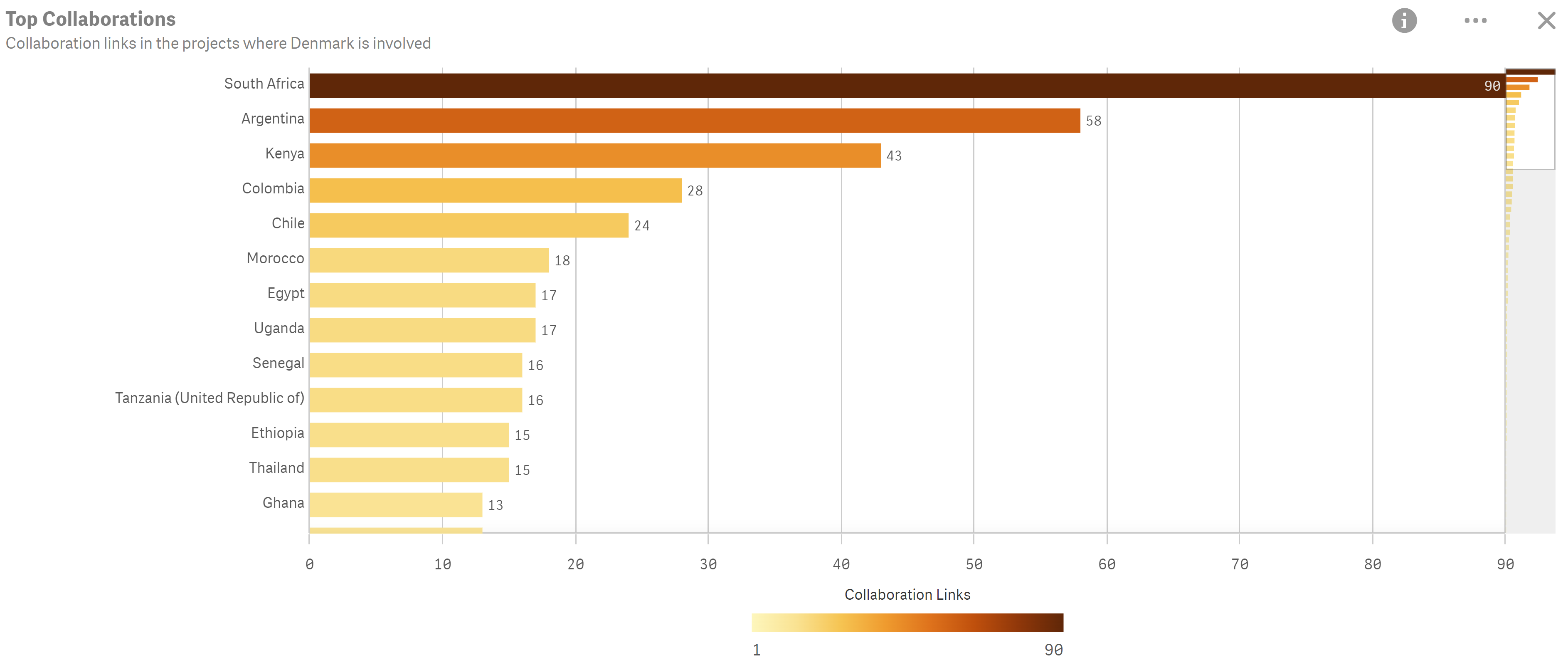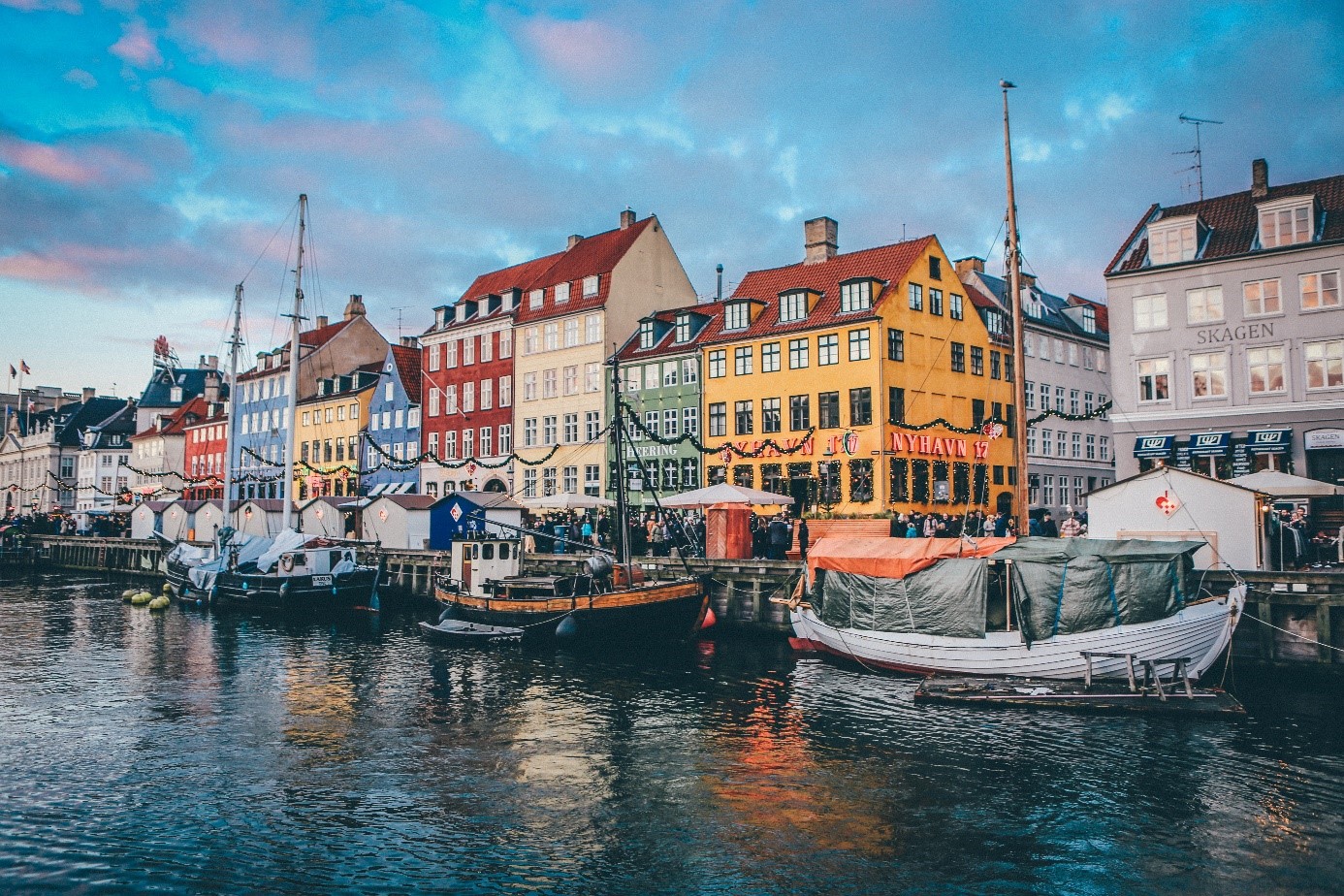“Since 2011, Denmark has a cooperation agreement with the Brazilian Ministry of Research. The agreement focuses on areas such as green transition, sustainable production and food safety”.
Denmark is a constitutional monarchy. The Kingdom of Denmark includes two autonomous territories, Greenland and the Faroe Islands. Denmark is an EU member state part of the Schengen area and its currency is the Danish Krone (DKK). Danes enjoy one of the highest standards of living in the world with a population of 5.8 million people and a GDP per capita of $63,880 in 2020 (ITA Denmark, 2021).
Thanks to their forward thinking and creative mindset, Danes are well known for their innovative designs. Industries like healthcare and pharmaceuticals have played a substantial role in the Danish economy. Nowadays, Danish innovators have been working particularly on green energy and sustainable living. Bioenergy is the most common source of renewable energy and half of the electricity produced in Denmark in 2020 come from solar and wind power (Denmark.DK, 2022).
Denmark is a highly digitalized and industrialized economy. Most financial transactions are cashless, a business can be set up online in less than 24 hours, a hundred public services are accessible on the internet using one single digital key, and data security and privacy are of high priority in Denmark (Denmark.DK, 2022). The country is also among world leaders in high-tech industries such as information technology, life sciences, clean energy technologies, and shipping. Finally, Denmark is a net exporter of food, fossil fuels, chemicals, and wind power, but depends on raw material imports for its manufacturing sector (ITA Denmark, 2021).
Economic Forecast
The country entered the COVID-19 period in an economically advantageous position and suffered minor damage during the pandemic. The economy recovered fast and has already returned to its pre-pandemic size. Firm growth is expected for 2022, reflecting a large fiscal surplus (The Economist – Denmark, 2022). As one of the world’s leading foreign investment destinations, Denmark is a firm supporter of liberal trade policy and ranks highly in indexes measuring political, economic, and regulatory stability. The most promising sectors for market growth in the coming year include: digital technologies and services, healthcare and life-science, tourism, renewable energy systems, and offshore oil and gas field equipment (ITA Denmark, 2021).
Denmark has made good progress in the energy sector, making the cost of renewable energy fall considerably. Large investments are being made to progress further with low carbon energy, supporting new technologies such as clean hydrogen and carbon storage and reducing CO2 emissions from transportation. Greenhouse emissions from the agricultural sector are still disproportionally high for the share of the market, especially from livestock. Thus, OECD recommends that action should be prioritised for this sector to support further reform of the EU Common Agricultural Policy if 2050 environmental goals are to be met (OECD, 2021).
Denmark’s Science Technology and Innovation (STI) Landscape
Denmark gives high priority to research and development. The Nordic country spends 3% of its GDP in R&D and the ICT sector has 5.2% of added value. In the EU, Denmark ranks 3rd in R&D intensity and 1st in number of researchers per million of population. It also exceeds the EU average percentage of employment in knowledge intensive activities (OECD, 2020).
The Ministry of Higher Education and Science (UFM) seeks to promote bilateral cooperation between Denmark and large investors of STI. The bilateral agreements are supported by Innovation Centres with the aim of facilitating contacts and networking. Brazil, being among the world’s leading food-producers and in the top ten for investment in research and technology makes it a particularly interesting partner for Denmark. Since 2011, Denmark has a cooperation agreement with the Brazilian Ministry of Research. The agreement focuses on areas such as green transition, sustainable production and food safety (Ministry of Higher Education and Science, 2022).
Some important organizations can be highlighted in the Danish STI sector. First, the Danish Agency for Science, Technology and Innovation is the main umbrella of the UFM providing guidance on funding and cooperation opportunities and analysing the STI landscape. Secondly, the Danish Council for Innovation and Policy is responsible for advising policymakers with regards to research, technological development and innovation. Thirdly, the Independent Fund Denmark provides grants based on researchers own initiatives, stimulating original ideas in all fields of science. Lastly, the National Committee for Research Infrastructure promotes national expansion and Danish participation in international research programmes.
EURAXESS Denmark points out some of the main institutions for research and innovation that are partially or entirely financed by public funds, including:
- Statens Serum Institut (SSI)
- The Danish Center for Social Science Research
- The National Research Centre for the Working Environment, Geological Survey of Denmark and Greenland.
Danish Universities also participate actively in research, such as:
- Copenhagen Business School
- IT University of Copenhagen
- Roskilde University
- Technical University of Denmark (DTU).
Finally, the Advanced Technology Group (GTS) institutes offer knowledge and technology consultancy, cooperation on technological and market-related innovation, testing, quality assurance, certifications and benchmarking – which contributes to enhancing the international competitiveness of the Danish business sector (EURAXESS Denmark).
National Science Technology and Innovation priorities
In June 2018, The Danish Agency for Science and Higher Education Technology published the RESEARCH2025, a strategic roadmap that identified nineteen areas in which society can benefit from investment in research in the coming years. At the same time, strategic research efforts can support development in both the business and public sectors. The priorities were presented in four categories and some of the thematics are as follows: Green Growth (bio sources, energy, construction, transport, climate), People and Society (public sector, young people and education, Denmark and globalization) Better Health (healthcare system of the future, personalised medicine) and New Technological Opportunities (bio and life science, digitalization, materials) (RESEARCH 2025, 2018).
Previous contribution to Horizon 2020
In total 3,986 Danish organisations were involved in Horizon 2020 projects with a total of EUR1,76 billion funding received by the project’s participants. The top Danish organizations in terms of EU contributions were the Copenhagen University, the Danish Technical University (DTU) and Aarhus University. In relation to Latin America, the countries with which Denmark collaborates the most in European Research programmes are, respectively, Argentina, Colombia and Chile (Horizon 2020 Dashboards, state of September 2022).

Funding opportunities in Horizon Europe
Horizon Europe is the biggest EU research and innovation programme ever with €95.5 billion of funding available over 7 years (2021 to 2027). It is open to the world. This means that participants from all over the world can participate in most calls. In many cases, the EU will fund at least partly the participation of the international partners. As a member state of the EU, participants from Denmark are automatically eligible for EU funding, unless specific limitations or conditions are laid down in the work programme and/or call/topic text. Most LAC countries are also eligible for EU funding as per the Horizon Europe participation rules. The list of eligible countries can be consulted in the Funding and Tenders Portal.
